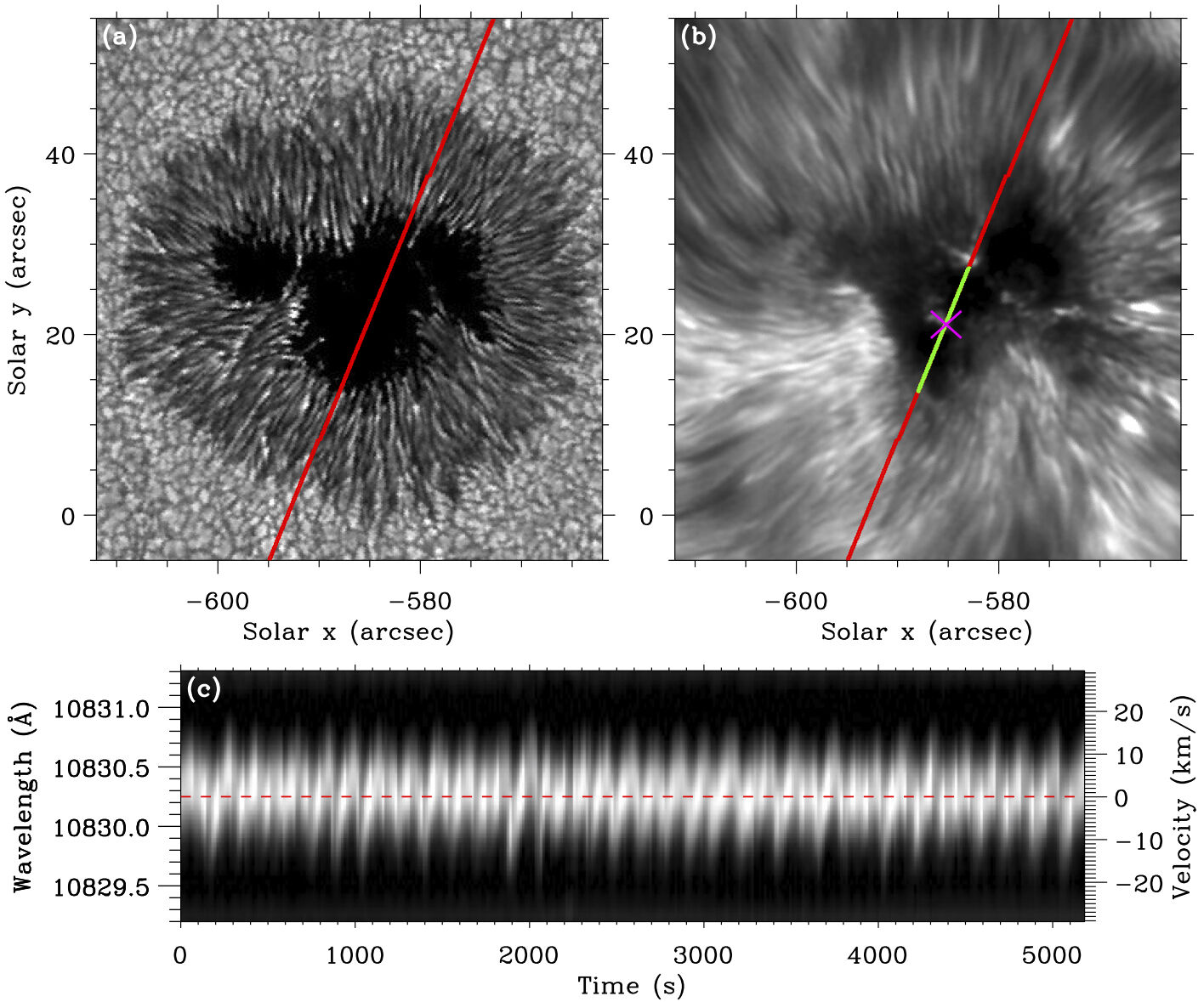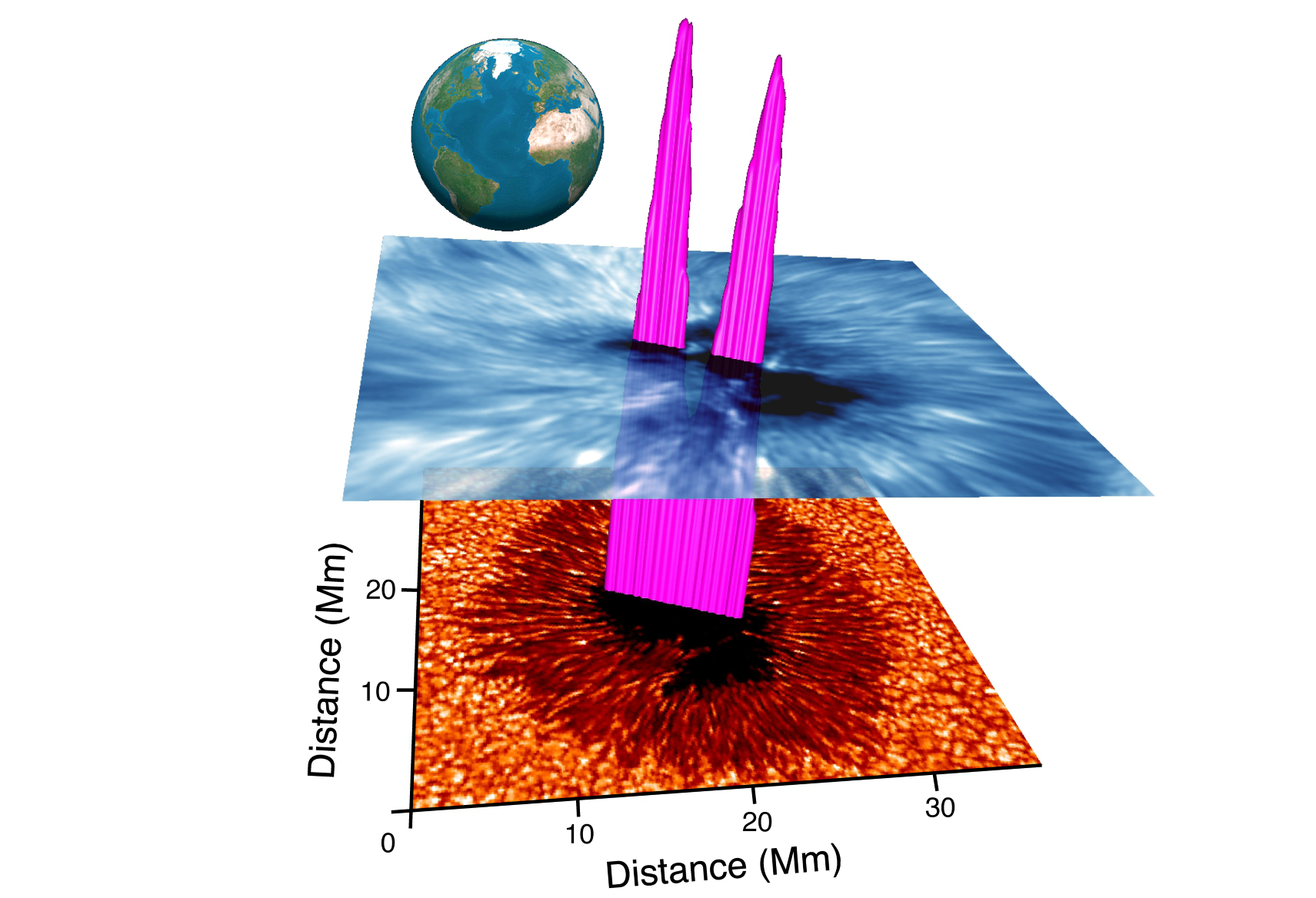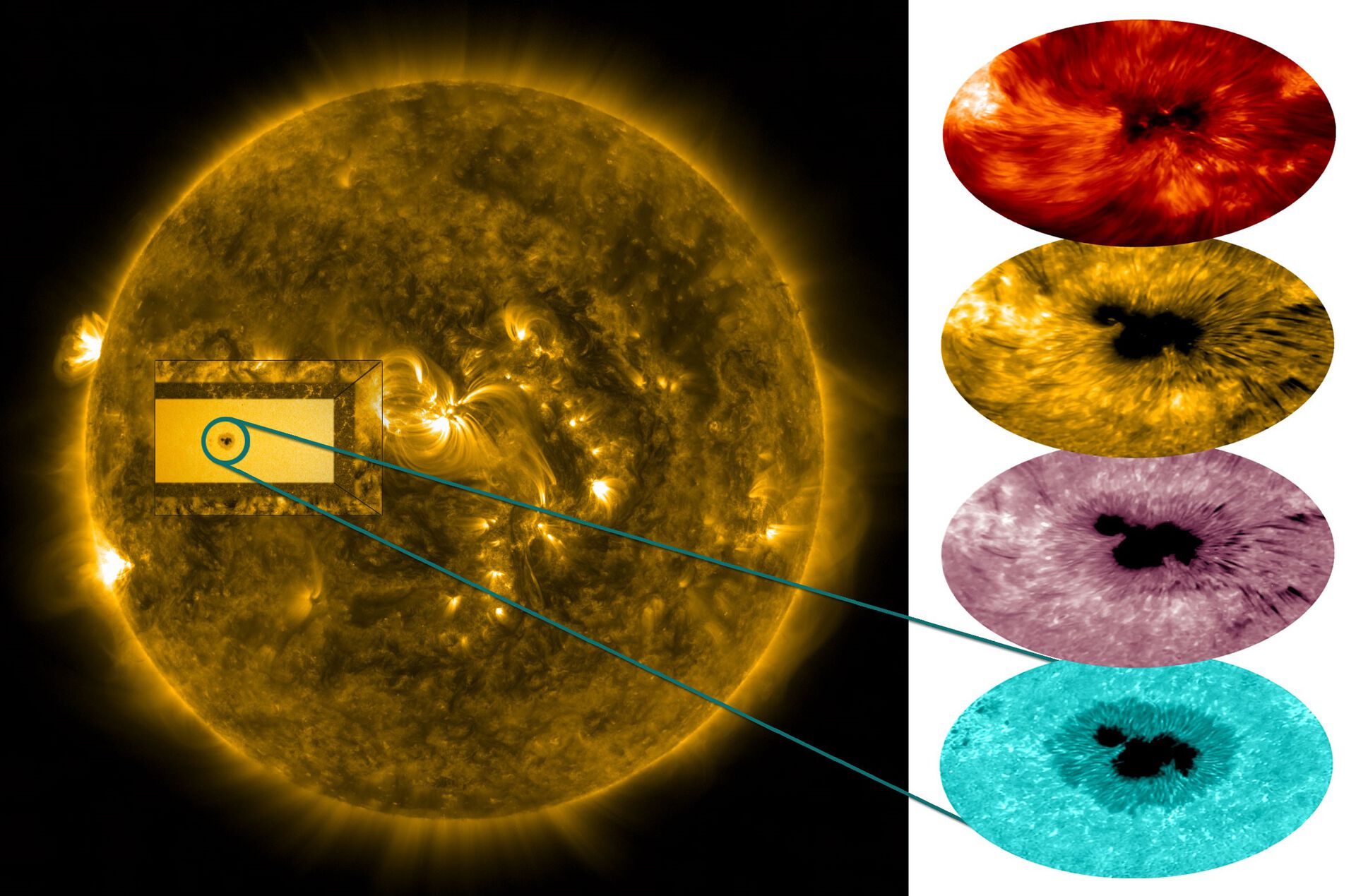The sun's atmosphere
Like onion skins, the Sun’s atmospheres can be delineated as three plasma layers superposed on the Sun.
The photosphere is the visible surface of the Sun characterized by phenomena like granules (convection cells where the hot plasma rises and sinks), sunspots and faculae.
The chromosphere extends about 2000 kilometers above the photosphere and is a transition to the inner corona radiating most of the Sun’s UV radiation.
The corona is the outermost layer and sight of explosively unstable magnetic-field configurations (solar flares, coronal loops, coronal mass ejections, etc.) and X-ray emission. The temperature rises steadily in the chromosphere, and then jumps abruptly in the corona to three orders of magnitude hotter than the surface.
For more than 60 years observations of the Sun have shown that as the magnetic waves leave the interior of the Sun, they grow in strength. But until now there has been no solid observational evidence as to why this is the case.
The corona’s high temperatures have also always been a mystery. Usually the closer we are to a heat source, the warmer we feel. However, this is the opposite of what seems to happen on the Sun – its outer layers are warmer than the heat source at its surface.
Scientists have accepted for a long time that magnetic waves channel energy from the Sun’s vast interior energy reservoir, which is powered by nuclear fusion, up into the outer regions of its atmosphere. Therefore, understanding how the wave motion is generated and spread throughout the Sun, is of huge importance to researchers.
Visualising the Sun’s musical score
"This new understanding of wave motion may help scientists uncover the missing piece in the puzzle of why the outer layers of the Sun are hotter than its surface, despite being further from the heat source", explains dr. David Jess from Queen’s University Belfast and lead author of a paper published in the prestigious journal Nature Astronomy.

By observing the different colours (frequencies) of the Sun’s light, the scientists were able to examine the behaviour of certain elements from the periodic table within its atmosphere, including silicon (formed close to the Sun’s surface), calcium and helium (formed in the chromosphere where the wave amplification is most apparent).
The variations in the elements allowed the speeds of the Sun’s plasma to be uncovered. The timescales over which they evolve, were benchmarked, which allowed the wave frequencies of the Sun to be recorded. This is similar to how a complex musical ensemble is deconstructed into basic notes and frequencies by visualising its musical score.
A science team focused on “waves in the Sun's atmosphere”

With the financial support of the Research Council of Norway (through its centre of excellence, the Rosseland Centre for Solar Physics, UiO), the experts formed a consortium called “Waves in the Lower Solar Atmosphere” (WaLSA) to focus efforts on advancing knowledge surrounding wave activity in the Sun’s atmosphere.
For this particular research, the team, including 13 scientists, spanning five countries and 11 research institutes, used advanced high-resolution observations from the National Science Foundation’s Dunn Solar Telescope in New Mexico. The team then used super computers to analyse the data through simulations.
They found that the wave amplification process can be attributed to the formation of an “acoustic resonator”, where significant changes in temperature between the surface of the Sun and its outer corona create boundaries that are partially reflective and act to trap the waves, allowing them to intensify and dramatically grow in strength.
The Sun’s chromosphere as an acoustic guitar
The experts also found that the thickness of the resonance cavity – the distance between the significant temperature changes – is one of the main factors governing the characteristics of the detected wave motion.

"Our research provides a unique observational evidence on how waves are amplified in the solar atmosphere, a similar effect that causes sound amplification in an acoustic guitar (due to a resonance cavity behind the strings)", comments Shahin Jafarzadeh, researcher at the Rosseland Centre for Solar Physics (RoCS).
The newest-generation solar telescopes in action
Plans are now being made by the global physics community to make further investigations using the newest-generation solar telescopes that will become available over the next few years. This includes the upcoming Daniel K. Inouye Solar Telescope and ALMA, as well as the (near) future advanced instruments such as the SUNRISE balloon-borne solar observatory and the European Solar Telescope.
Want a recap of the explanation? Take a look:
Contact:
Shahin Jafarzadeh, researcher at Rosseland Centre for Solar Physics
The scientific article:
A chromospheric resonance cavity in a sunspot mapped with seismology





